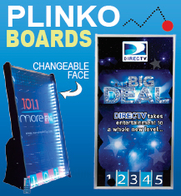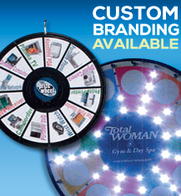 We’re going to talk about doing a better job staying in touch with other parts of the corporate family and how to get along with the more – let’s say estranged parts of the company. And since I am still the TradeShow Teacher, we’ll put all this into the context of improving your trade show results!
We’re going to talk about doing a better job staying in touch with other parts of the corporate family and how to get along with the more – let’s say estranged parts of the company. And since I am still the TradeShow Teacher, we’ll put all this into the context of improving your trade show results!
This is an important lesson that shouldn’t be taken lightly. The extent of your success can be linked directly to your collaboration with colleagues, departments, management and at times outside consultants. Unless you have cooperation and communication with other key stakeholders in your company, your trade show efforts have no chance of achieving their full potential.
Sales and Marketing: The “Primary Players”
While there are many departments that contribute to your company’s trade show success, the primary players are the sales and marketing teams. Not surprisingly, the interactions of those departments will be the focus of this lesson. Surprisingly enough, the two departments that should work the closest together on trade shows commonly have the biggest “disconnect” between them.
What I see over and over again working with all sorts of clients is what I call “The Great Sales and Marketing Divide”; and we’re not talking a little rift here, we are talking about the proportions of the Grand Canyon. Only too often Marketing goes ahead with independently planning the shows and delivers sales with some results when the show is over and is all happy with their achievements while Sales thinks it was all a big waste of time.
The first reason for that is that marketing people tend to be a more creative bunch; they like to think of ways to get their message out, to get people excited and to do cool stuff. I am not saying that marketing departments aren’t doing a good job using metrics, science and research in their work, but Marketing’s activities are nowhere near as measurable as Sales results. Sales people by the nature of their job have to have a different mindset. They must never be too shy to ask a customer for business, they have to learn just how pushy they can be and have to meet strict quotas. There usually is a reason why sales people are not in Marketing and marketing people aren’t in Sales. Very often Marketing and Sales have fundamentally different expectations from the same show. That is why it’s especially important for those departments to learn how to effectively communicate so joint, anticipated results can be achieved.
When I was a corporate trade show manager, one of the most valuable lessons I learned was to work particularly close with the Sales department to learn exactly what they were looking to get from the shows. What could I do to help them meet sales goals and increase company revenue? Listening to their needs and implementing new processes to support those needs turned my trade show results from mediocre to outstanding! So let’s explore this some more.
Sales is Marketing’s Client
While this can be a challenging, in some cases possibly frightening thought for some marketing departments, the most important thing you can take-away from this lesson is that the sales department is ultimately the marketing department’s client. Just as any customer has particular needs, so does the sales department.
The probably biggest misconception marketing people have is that there is a correlation between the number of leads collected and the success of a trade show. If the leads don’t meet the criteria of prospects’ the sales department can sell to, sales teams are wasting trying to follow up with duds!
Since the sales department depends on Marketing to deliver them with qualified sales leads, one of the first things to determine is how Sales and Marketing can collaborate to improve the quality of leads and understand desired quantities. Yes, even too many qualified leads can be a bad thing; assuming you spent extra dollars to generate them but don’t have the sales resources to properly follow up in a timely fashion. Coordination and cooperation between the two teams is essential for the bottom line. If you want to succeed, pre show meetings with Sales and Marketing team members have to become a routine part of your company’s trade show planning process.
Here are some examples of the key type of topics both departments have to be in sync about for each show .
- Key prospects and profile
- Lead qualification strategy
- Follow-up strategy
- Lead coding
- Trade Show goals that align with sales goals
- Messaging that reaches the different types of key prospects per show
- Setting pre-show appointments
- Pre-show marketing
- Pre-show networking opportunities
Sales and Marketing Working Together
Now that you know some of the key topics to address as part of your trade show planning process, let’s talk about how to actually do this:
- Share the pre-show planning meeting agenda with the Sales Manager, Director or VP (whichever is applicable in your company) before the meeting:
Before you schedule a meeting with departmental staff, check in with Sales management on your proposed agenda and ask if there are any additional areas of concern that should be covered. - Before you finalize the planning schedule, discuss any deliverables the Sales department will be responsible for with their management and make sure they understand them and agree with them:
Regardless of imposing deadlines, you can’t expect another department to adhere to your schedule without consulting their management first. Start by scheduling a meeting with Sales management to present your initial planning schedule, tasks and deliverables. Determine the deadlines together and who will be responsible for the various deliverables and tasks. - Work with Sales management:
Instead of chasing after each person for the items you need from them, I suggest for you to have everything funnel through the manager, then to you. This is typically the best process to follow since sales organizations tend to be very structured and sales staff tends to feel much more accountable to their management than to someone from another department. - Determine the ideal process for checking on tasks:
Everyone has their own preference for communication. Determine which method of communication will work best between you and Sales management to stay updated on the progress of tasks and deliverables. Also determine together how often the progress updates should be sent. Weekly?, Bi-Weekly?, Monthly? - Remain as flexible as possible:
Just as new tasks get handed to you and deadline dates have to be pushed back, expect the same to happen in other departments. Keep that in mind when you set up your initial schedule so you have some “padding” and extra time to work with.
To sum it up: By using a cooperative approach to working with sales it will be easier to plan your shows and improve your results; and have the support of management on your side… That’s it for this lesson! Bye for now.
About the Author
Jon Edelman provides exciting trade show marketing ideas, including advice about prize wheels, customizable scratch-off cards, money blowing machines, and other exciting trade show attractions. With years of experience in the trenches, he is an expert on booth displays, lead generation techniques, and networking with trade show vendors. Helping to build a referral-generating system, his ideas continuously lead to a boost in sales and revenue.



















